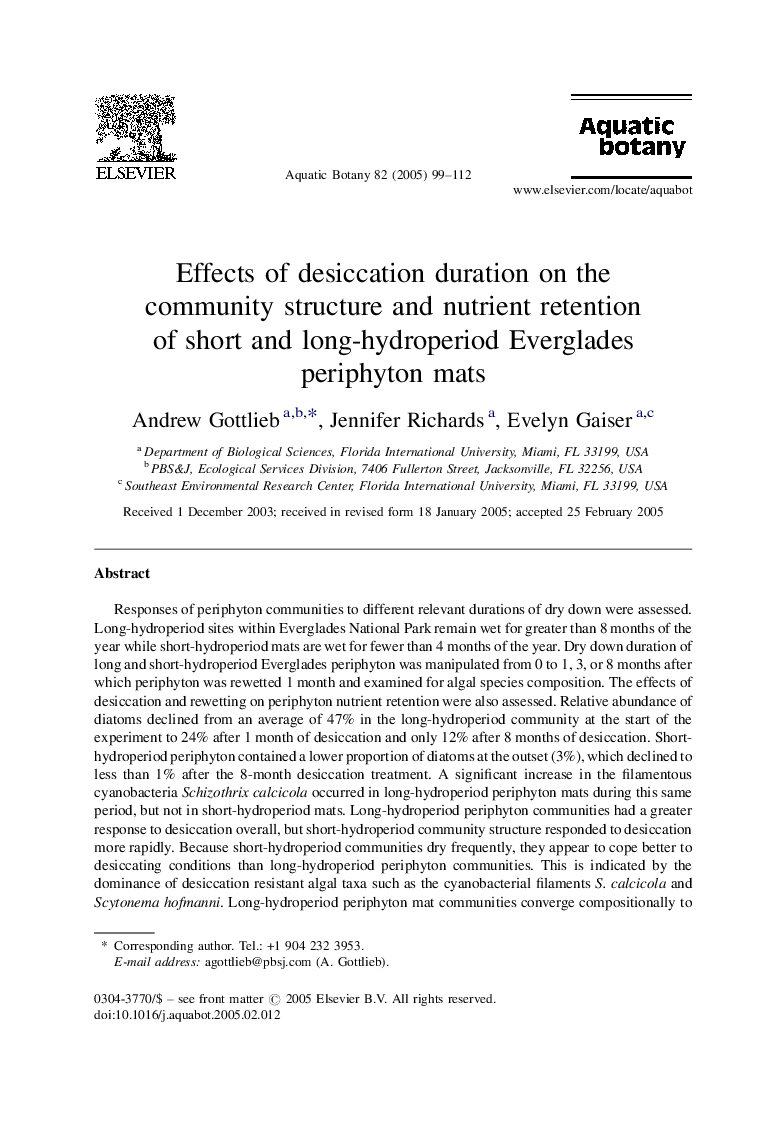| Article ID | Journal | Published Year | Pages | File Type |
|---|---|---|---|---|
| 9477639 | Aquatic Botany | 2005 | 14 Pages |
Abstract
Responses of periphyton communities to different relevant durations of dry down were assessed. Long-hydroperiod sites within Everglades National Park remain wet for greater than 8 months of the year while short-hydroperiod mats are wet for fewer than 4 months of the year. Dry down duration of long and short-hydroperiod Everglades periphyton was manipulated from 0 to 1, 3, or 8 months after which periphyton was rewetted 1 month and examined for algal species composition. The effects of desiccation and rewetting on periphyton nutrient retention were also assessed. Relative abundance of diatoms declined from an average of 47% in the long-hydroperiod community at the start of the experiment to 24% after 1 month of desiccation and only 12% after 8 months of desiccation. Short-hydroperiod periphyton contained a lower proportion of diatoms at the outset (3%), which declined to less than 1% after the 8-month desiccation treatment. A significant increase in the filamentous cyanobacteria Schizothrix calcicola occurred in long-hydroperiod periphyton mats during this same period, but not in short-hydroperiod mats. Long-hydroperiod periphyton communities had a greater response to desiccation overall, but short-hydroperiod community structure responded to desiccation more rapidly. Because short-hydroperiod communities dry frequently, they appear to cope better to desiccating conditions than long-hydroperiod periphyton communities. This is indicated by the dominance of desiccation resistant algal taxa such as the cyanobacterial filaments S. calcicola and Scytonema hofmanni. Long-hydroperiod periphyton mat communities converge compositionally to short-hydroperiod periphyton communities after prolonged desiccation. Desiccation and rewetting caused long-hydroperiod periphyton to flux greater concentrations of nutrients than short-hydroperiod periphyton. Significant increases in efflux occurred from 1 to 8 months for total phosphorus (TP) and from 1 to 3 and 8 months for total nitrogen (TN) and total organic carbon (TOC). Thus, changes in periphyton mat community structure and function with altered hydroperiod may have long-term ecosystem effects.
Related Topics
Life Sciences
Agricultural and Biological Sciences
Aquatic Science
Authors
Andrew Gottlieb, Jennifer Richards, Evelyn Gaiser,
